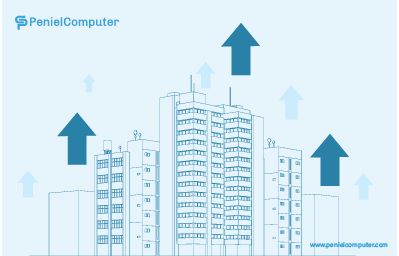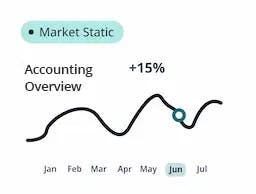
Admin
2024-01-16

After selecting a new construction software for your business, you are prepared to initiate the system installation and start using it. However, rushing through the implementation of your construction ERP software without a well-defined plan can result in potential issues or complications in the future. It is crucial to slow down and establish a robust plan for implementing the ERP software. This ensures proper setup, addresses inefficiencies from the previous system, and facilitates a quick and smooth transition.
Contact us?
If you are a small construction business owner or project manager who is either about to acquire new construction ERP software or has already done so and seeks guidance on its implementation, you've come to the right place. We are here to provide the assistance and advice you need.
5 Tips for Effective Construction ERP Software Implementation
Initiate with Senior Leadership and Establish Project Leadership
The optimal execution of software implementation processes often hinges on the wholehearted involvement of senior executives and owners. Their ability to articulate their goals and unwavering commitment is key to the success of the endeavor.
Endorsement and sustained backing from top-level leadership achieve several key outcomes that foster alignment among managers and staff. Executives are empowered to greenlight the plan, allocate necessary resources, and endorse essential processes for achieving success. Their endorsement emphasizes the software's importance to the company's goals and prevents minor setbacks or employee resistance from becoming major project challenges.
Plan the Construction ERP Software Implementation Process
Contractors should approach software installation with the same level of meticulous planning as they do for their construction projects. This entails establishing timelines, defining milestones, outlining scopes of work, and documenting responsibilities. A reliable software supplier can be instrumental in this regard, drawing upon its expertise from similar endeavors in comparable companies.
For some companies, a gradual phased approach to software implementation proves advantageous. This approach involves a select group of users ironing out any operational issues. It requires gaining expertise and subsequently assisting in rolling out the software to their colleagues. Conversely, others may opt for a simultaneous, all-encompassing deployment to expedite the transition and prevent disparities arising from different individuals using varied systems.
Timing is a pertinent consideration. Contractors often choose to implement scheduling, dispatching, or field tracking systems during slower seasons, such as winter, to minimize project disruptions and allow for comprehensive training.
Engage the End Users
In the construction industry, resistance to novel concepts is not uncommon, especially when these concepts challenge established and comfortable practices. To address this, contractors embarking on the implementation of new construction ERP software should capitalize on two key insights. Firstly, most of their employees inherently aspire to work with the finest available tools. Secondly, employees embrace new tools if they are actively engaged in the process and can comprehend the broader perspective.
For instance, a foreman who is simply handed an iPad with minimal training and tasked with enhancing field log entries is likely to resist this initiative. Conversely, contractors who have achieved greater success in such scenarios initiate early collaboration between foremen and other staff. They solicit input and involve them in shaping the software's requirements. Furthermore, they emphasize how these changes benefit various facets of the business and contribute to the company's overarching progress, thereby fostering enthusiastic support.
Implement Parallel Process Changes in Construction ERP Software
Introducing software into a construction company should not necessitate a complete overhaul of the fundamental logic and operational processes that govern its activities. Simultaneously, contractors who simply incorporate software while maintaining their traditional methods may overlook valuable opportunities.
For instance, a company can utilize construction ERP software to standardize the structure and completion of estimates or field logs across various employees, divisions, or locations. This standardization helps improve accuracy, efficiency, and consistency in these processes. This presents an opportunity to evaluate the methods employees use to perform tasks, remove inefficient steps, and preserve best practices. Streamlining processes in this way enhances accuracy, efficiency, and overall effectiveness. This approach yields benefits in terms of accuracy, efficiency, and consistency, as it leads to a more standardized and streamlined process.
In another scenario, companies transitioning from paper timecards or spreadsheets to electronic field logs often experience the seamless transfer of data to their payroll and accounting systems. This transition eliminates the need for interim, redundant data entry steps, streamlining processes and reducing the likelihood of errors. This adjustment allows them to optimize their processes and allocate resources effectively. It enables payroll clerks to focus on more valuable tasks.
Follow Through and Adapt
Specialized construction software, designed with construction principles and user-friendly interfaces in mind, should not burden contractors with extensive training demands. Nevertheless, it is essential to complement the technology investment with appropriate training tailored to the users' experience and needs.
Personalized on-site or supplier-based training typically offers the most comprehensive and intensive learning experience. Online sessions, video tutorials, and user conferences also serve as effective alternatives. While initial training holds obvious significance, many companies initially invest in training but miss opportunities to optimize their software by neglecting ongoing training. As users gain experience, requirements evolve, and new features are introduced, continuous training becomes vital.
Finally, it's crucial to acknowledge that software should not be a one-time installation that is activated and forgotten. Most contractors undergo a learning process, both about themselves and the technology, as they adopt software. Their initial vision of how to use a solution may not precisely align with how they ultimately use it over time.
The bottom line
With the right approach, you can swiftly get your new software up and running.
Construction companies embarking on construction ERP software implementation without a well-structured plan risk encountering complications at various stages. These complications result in employee dissatisfaction and long-term revenue loss. Therefore, it is essential to develop a comprehensive plan to mitigate these risks and ensure a smooth and successful implementation process.
Hence, it is imperative to establish a comprehensive timetable and adhere to it diligently. Whether you are in the initial stages of your software search or having issues with your software rollout, Emerald's ERP consultants are here to help. They readily provide guidance and expertise in choosing the ideal software solution for your specific business needs. You can get their support throughout the software selection process to ensure a seamless and effective implementation.
Engaging with an advisor is a straightforward process. Firstly, schedule a convenient time for us to reach out to you. Once we connect, share your requirements, and your advisor will dedicate a few minutes to discuss your specific software goals.
Latest News
From Our blog and Event fanpage




